SEMANTIC TOPOLOGIES
Spring 2022 | Thesis Prize First Place
By leveraging the hybrid outputs of semantic AI neural networks, this project reforms the spatial, economic, and cultural role of ship breaking in Chittagong, Bangladesh. A catalog of entropic material constructs was developed as a way to extract various AI topologies and apply them within the context of the ship breaking ecosystem. The drama of these constituent actors, however, plays out in a more urban setting. In arranging these loose formal fragments, there emerges a new type of condition; one that extends off the shore and occupies ships with the very materials used for their
construction.
construction.
The true reformation is not in the latent architectural data, but the possibilities for the literal ship material to be morphed into occupiable constructs wherever they may be. As these constructs emerge, the ship breaking space is transformed, filtering new ships to other dismantling areas. Over time, the occupation of the shallow coast allows new narratives of the informal settlements to materialize; narratives of vertical public spaces, robust markets, and central places of worship.
VQGan + CLIP
Underpinning the entire logic of the project is the semantic Ai neural network VQGan. This GAN, when paired with CLIP (Contrastive Language–Image Pre-training) is a text-to-image model that generates images based on a semantic input and other parameters. As a design tool, the outputs of these networks were used to inform new topologies, organizations, and aesthetics. The image output themselves are only as useful as the designer's interpretation or skill to translate into a 3D reality.
A point of contention at the foundation of this project is the use of and justification for artificial intelligence networks of this nature. On the surface it appears that image generation can only go so far as to inspire the design of something else, serving as a mere initial force. However, throughout this project, the neural networks serve as feedback loops, being deployed at different times, at different scales, and for different levels of specificity to generate images that are used to deform 3D models, develop aesthetics, and speculate on the possibilities of the design schema presented. The operations of these networks are performed in a closed system; recycling data and prompts once a certain intuition and quasi human-machine dialogue is formed. After using these tools to drive this project, it is clear that they are not required to reach the solution we ultimately reached, but the result itself would clearly never have been reached without it.
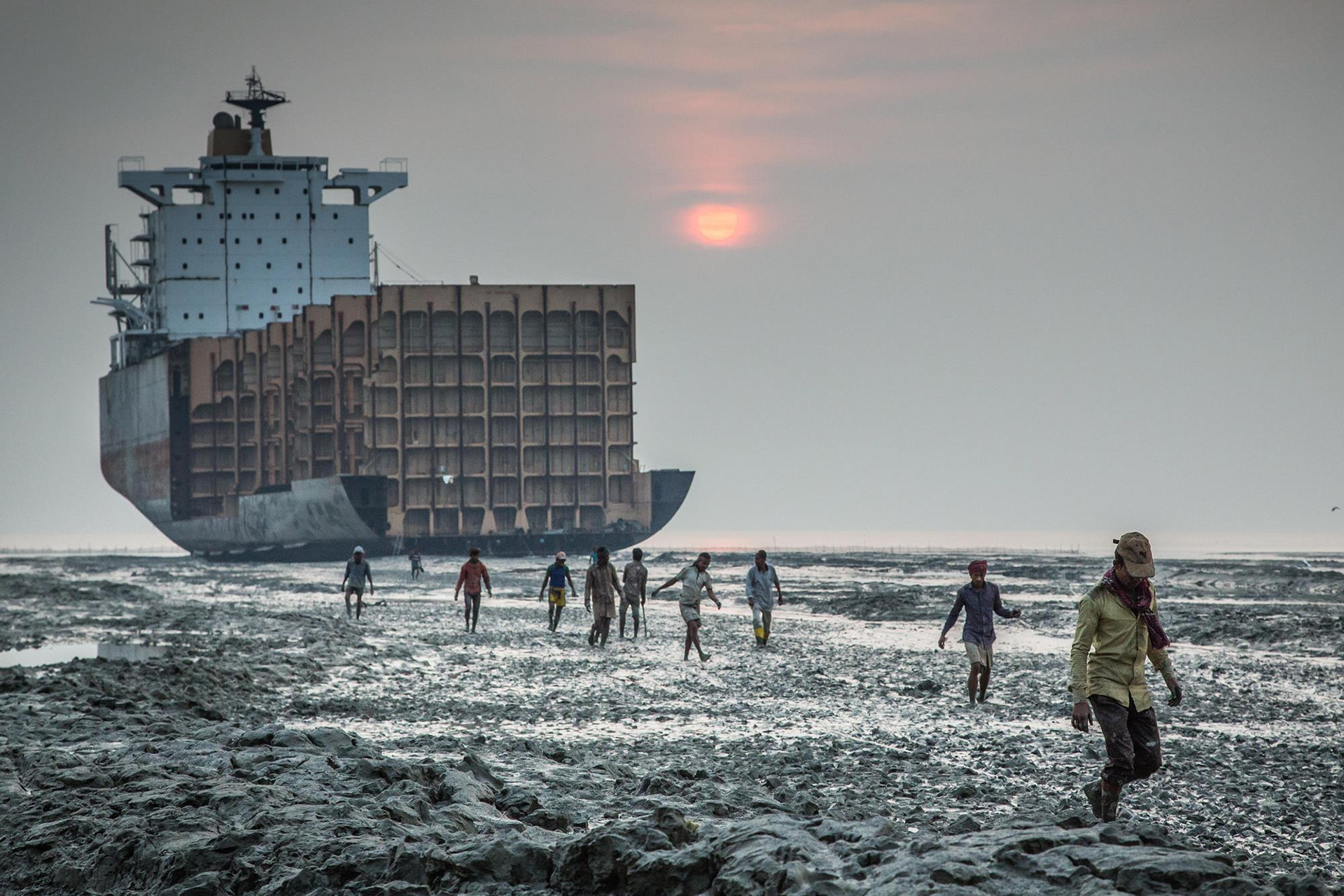
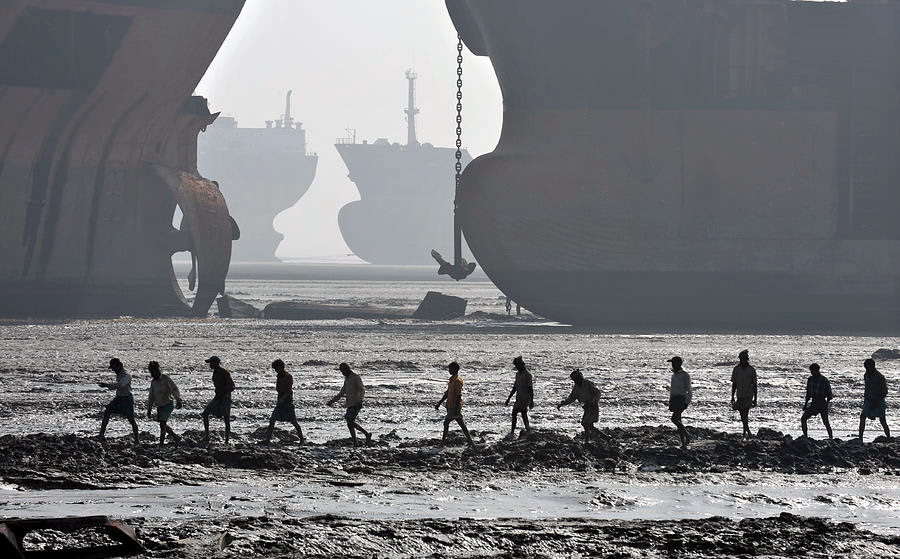
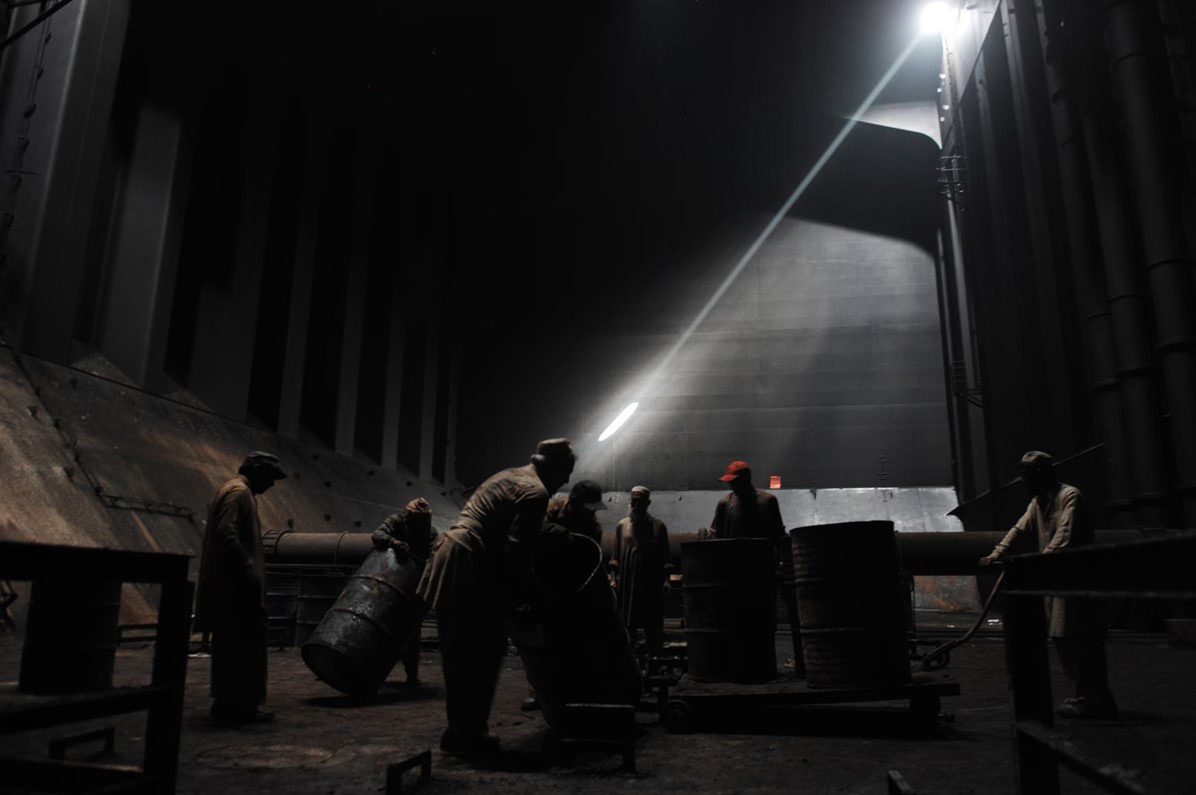
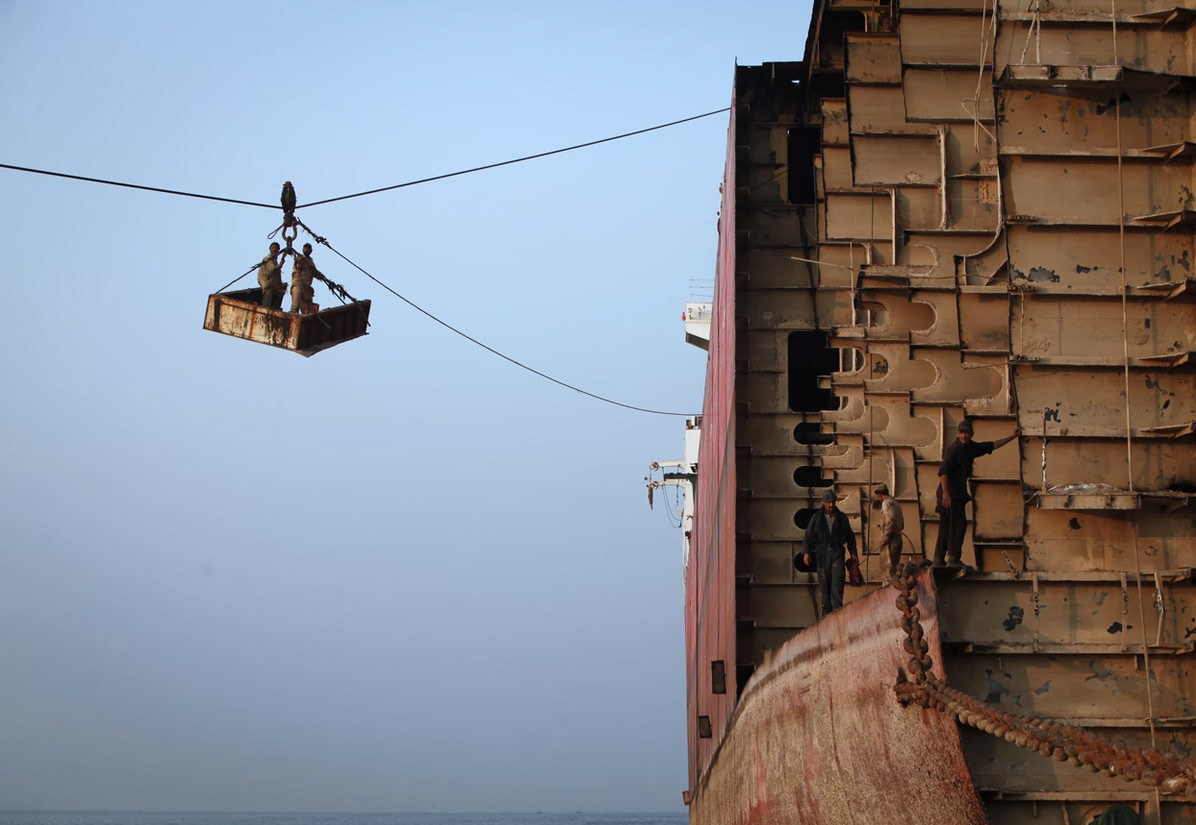

System Entropy
The project is stationed in the Bay of Bengal where most of the worlds naval architecture goes to die. Bangladesh also has no natural iron ore deposits. The cities are built with the processed corpses of the most robust sea dwelling creatures. This project fantasizes a future in the past, in which a cataclysmic event isolated a number of ships in a small quadrant of the coast leading to their destruction and rebuilding into utterly fantastic series of social spaces which celebrate the raw power of man with mythologic levels of creativity. Guided by our generative tools we make an attempt to blueprint the feedback loops and series processes in developing a catalogue of potential spatial scenarios, carved broken and welded by the shanty-dwelling shipbreakers.


Shipbreaking
Its unlikely the violent and typically treacherous practice of ship-breaking will end anytime soon. Again, over 60% of Bangladesh infrastructure is developed with the reprocessed ore of the ships and the industry employs over 200,000 citizens, between the cutting winching and destruction of the vessels, to those smelting the ore, rerolling and flattening the steel, to those far from the beach, selling the products, and by-products to other nations.
The practice of shipbreaking also made the intervention of any architectural solution very tentative. Having to navigate the practical limitations of the labor force, their tools, and availability of materials while using the output of artificial intelligence meant the design process insistently oscillated between the desire to propose radical design solutions and working to drive a usable framework. Developing a physical mapping of this process (above) allowed us to make informed decisions about how to form a clear vision of what the project can do from a practical standpoint before managing data and results from our Ai tools.
Semantic Constructs
Developed as a series of architectural scenarios, this set of constituent spatial constructs were formed directly from the output of VQGan + CLIP images. This matrix was developed as way to deploy meaningful programmatic interventions according to our earlier mapping studies. Although formed on the basis of very generic typological programs such as prayer halls, markets, and watchtowers, the construct itself is specified through technique and its deployment on a certain type of vessel.
There is also a unique scalar quality to these scenarios that emerges only when contextualized. When framing these outputs in the context of the shipbreakers, there is a tangibility to the number and complexity of elements that begins to inform not only the scale, but location and type of deployment. Porosity was also a parameter that informed the placement of these scenarios into a more coherent urban fabric.
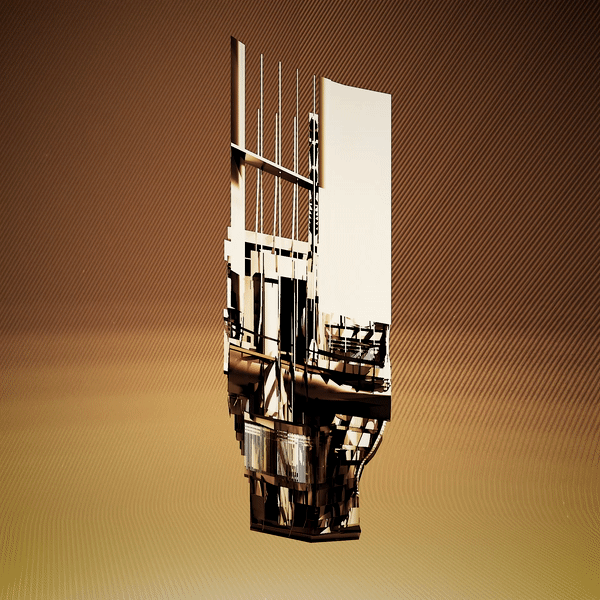
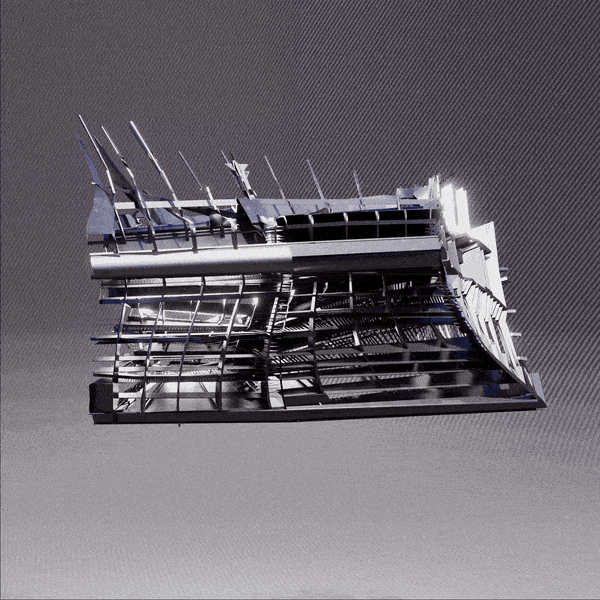




Construct Deployment
The formation and deployment of these constructs was the result of an ongoing dialectic between the pragmatic issues of Chittagong and shipbreaking and the outputs from the neural networks. By latching onto the sides of ships or anchored into the ground along a sprawling urban bridge design, the constructs begin to take on their own logics and narratives as hallucinated objects enriched by the culture and context of the place. By indulging in the ornamentation raw industrial character of this context, the resulting constructs develop a dystopian nature. The visualization of these constructs as spatial scenarios has also been enhanced by the layering of textures and images of Chittagong processed by artificial networks.



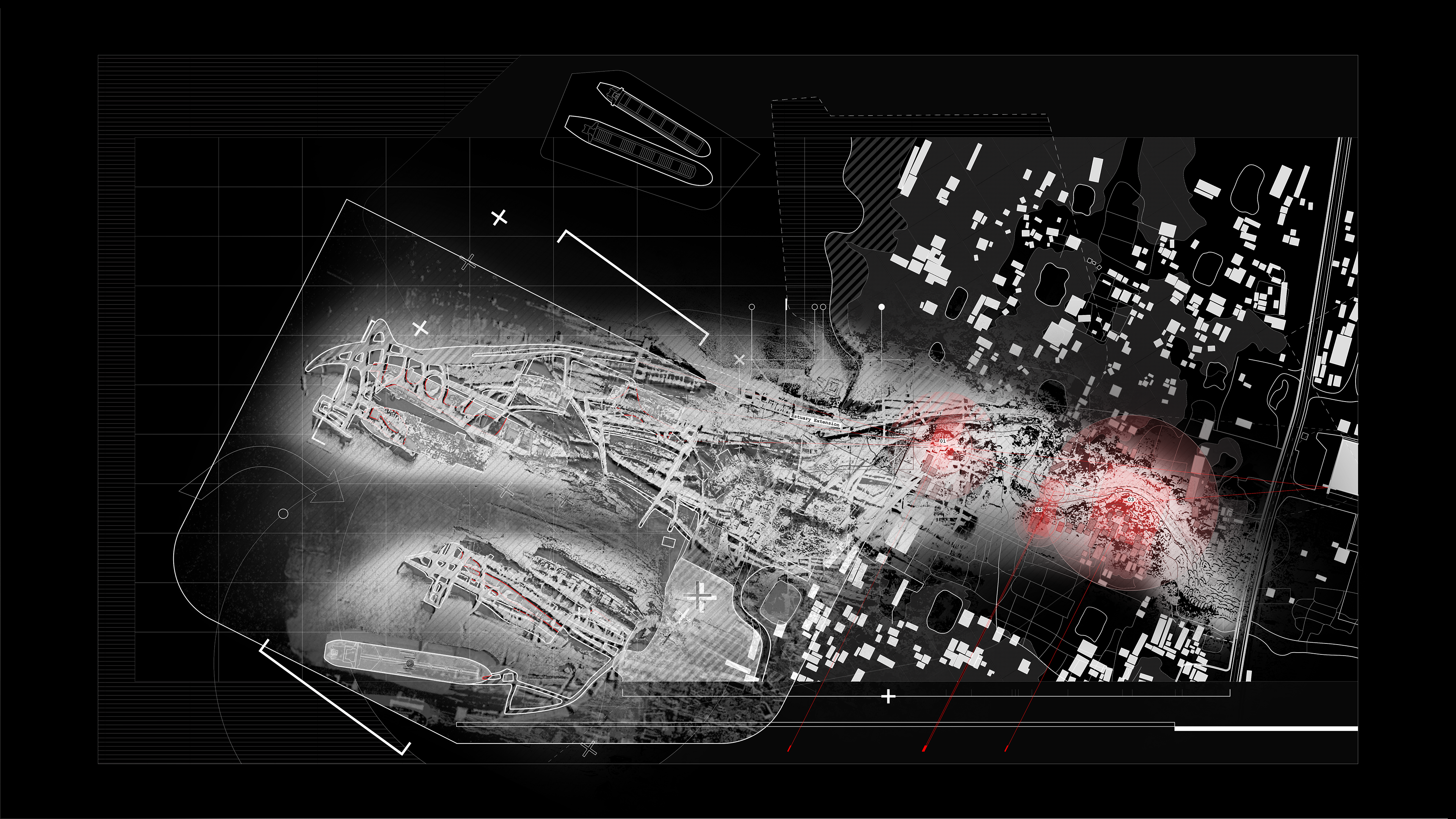
Urban Ship-city
The final scale of the project's investigation culminates in a growing, floating city built upon the dilapidated ships. Furthering the dialogue of the artificial and human design processes, this scale allowed for the testing and mapping of an intense network of bridging that would form the circulation of a newer, more resilient form of urban design in this area. The dissolution of the coastline in the near future of Bangladesh and the impossible retreat over nearby mountains means the people here-amongst the poorest in the world-must use what has been their only available resource; the ships. By extending the organic shanty conditions onto the water allows for several benefits including the formalization of shipbreaking, development of larger public spaces, and the remediation of enclosed coastal areas.
To speculate on the future of these coastal areas, the bridging networks were used as seeds for further GAN experiments. The results show a gradual formalization of the coastal 'urban' area; fantasizing that the large scale development of this system can create a larger, more systemic design outcome. Although unlikely, the results of these types of tests allow us as designers to speculate on the potentials of our prescribed systems even within a system as chaotic and unpredictable as this.